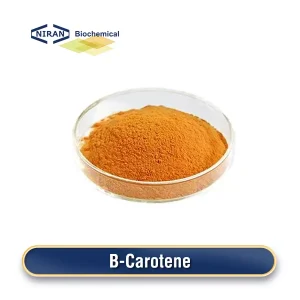Niran Biochemical
YOUR RELIABLE FOOD INGREDIENTS
Send Inquiry
Red Yeast Rice
- CAS: 28755-30-6
- Chemical Formula: C21H22O5
- Certification: KOSHER, ISO, HALAL, FSSC22000, BRC, etc.
- MOQ: 1000KG
- Shelf Life: 2 Years
Inquire Product
Product Description
What is Red Yeast Rice?
Red yeast rice is a natural product made from rice fermented by monascus purpureus, mainly used in food coloring and health products. Its bright red color comes from monascusin and monascus, while lovastatin has the effect of lowering cholesterol.
Red yeast rice is used in the food industry to improve color and flavor, in health products to lower cholesterol levels, and as a medicinal material in traditional medicine.
The preparation process of food-grade red yeast rice mainly includes traditional fermentation, liquid fermentation and modern fermentation technology. The traditional fermentation method is the earliest process, which is to ferment rice under a controlled environment after inoculating it with monascus purpureus, and then dry it. This method is simple and low-cost, but the fermentation cycle is long, and the yield and pigment concentration are low.
The liquid fermentation method uses liquid culture medium for fermentation. This method can better control the fermentation conditions such as temperature and pH value, thereby improving the yield and quality of monascusin. After fermentation, monascusin is extracted by filtration and concentration. This process can produce more pigment at a higher concentration and is appropriate for large-scale manufacturing.
Modern fermentation technology is optimized on the basis of traditional and liquid fermentation, using automated systems to precisely control fermentation conditions, and improving culture media and post-processing technology to improve production efficiency and product consistency. This process has become mainstream because it not only improves yield and quality, but also ensures product stability and food safety.
Related parameters:
| ITEMS | STANDARD |
| Tap Density | 0.79-1.0 g/ml |
| Moisture,% | ≤ 10 |
| Heavy metal(Pb),ppm | ≤ 1 |
| As,ppm | ≤ 1 |
| Aflatoxin B1,ppb | ≤ 5.0 |
| Citrinin(test limit≤50ppb) | Not Detected |
| Yeast | ≤25 cfu/g |
| Mold | ≤25 cfu/g |
| Total Plate | ≤1000 cfu/g |
| E.coli | ≤30 cfu/g |
| Pathogenic bacteria | Absence |
Recommended dosage:
| Food name | Maximum usage(g/kg) |
| Chocolate | 0.1 – 0.5 g/kg |
| Biscuits | 0.1 – 0.3 g/kg |
| Candy | 0.2 – 0.5 g/kg |
| Drinks | 0.1 – 0.3 g/kg |
| Seasonings | 0.2 – 0.5 g/kg |
| Dairy products | 0.1 – 0.2 g/kg |
| Meat products | 0.1 – 0.2 g/kg |
| Energy drinks | 0.1 – 0.2 g/kg |
| Bakery products | 0.1 – 0.2 g/kg |
| Salad dressings | 0.1 – 0.3 g/kg |
| Protein supplements | 0.1 – 0.3 g/kg |
| Barbecue seasoning | 0.1 – 0.3 g/kg |
| Dietary supplements | 0.1 – 0.5 g/kg |
Red Yeast Rice has a wide range of uses
- Natural colorant: The pigment in red yeast rice gives it a bright red color, so it is widely used as a natural colorant for food and beverages. Compared with synthetic pigments, red yeast rice provides a natural color solution for a variety of foods such as chocolate, pastries, ice cream, etc.
- Cholesterol-lowering: Red yeast rice contains the active ingredient lovastatin, a natural statin compound that has a cholesterol-lowering effect. Lovastatin lowers blood cholesterol levels by inhibiting HMG-CoA reductase, thereby helping to prevent and treat hypercholesterolemia and atherosclerosis.
- Improve flavor: In some foods, red yeast rice is not only used as a colorant, but also provides a unique flavor. Its fermented products can enhance the flavor of food, especially in some traditional foods and condiments, such as soy sauce and seasoning sauces.
- Food health function: Some components of red yeast rice have antioxidant properties and other potential health benefits. In some health products, it is used as a supplement that may help improve blood health and overall metabolism.
User asked question:
Q: Will eating too much food-grade red yeast rice cause elevated blood cholesterol?
A: Excessive consumption of food-grade red yeast rice may pose health risks, mainly due to the active ingredient lovastatin it contains. Although lovastatin helps lower cholesterol, excessive intake may cause muscle pain, cramps, or muscle damage, and may also cause liver problems, such as elevated liver enzyme levels and abnormal liver function.
In addition, excessive red yeast rice may cause abnormal cholesterol levels. Although its main function is to lower cholesterol, excessive intake may cause physical discomfort. Excessive dosages of red yeast rice may potentially interact with other medications, raising the possibility of negative side effects.





